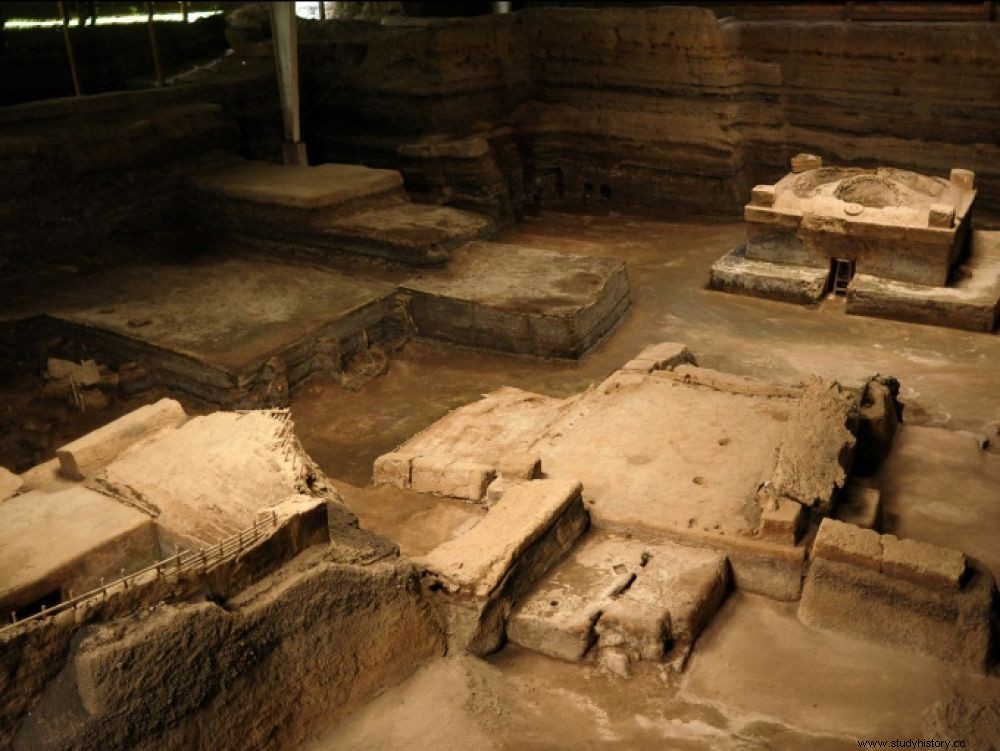A burial, the first of its kind, was discovered in the "Mayan Pompeii" in Joya de Ceren, a city buried by a volcanic eruption more than 1,400 years ago.

The ruins of pre-Hispanic buildings excavated in the archaeological site of Joya de Ceren (Salvador).
Human bones, in poor condition, were discovered at the beginning of the month, buried with an obsidian knife in Joya de Ceren, announced Thursday, November 22, 2018, the Minister of Culture of El Salvador. Discovered in 1976, this archaeological site was inscribed in 1993 on the UNESCO World Heritage List. It is located about 35 km north of the capital San Salvador. The person buried "probably lived in the city but was not killed by the eruption " from the Loma Caldera volcano, according to archaeologist Michelle Toledo.
A Central American Pompeii
The Cerén site has been remarkably well preserved under a five-meter layer of ash. It contains the only current and important traces of the daily life of the ancient Maya. Nicknamed the Pompeii of Central America, Cerén however has a notable difference with the city destroyed by Vesuvius:it had so far delivered no corpse, the population having undoubtedly perceived the imminence of the eruption and fled before disaster.
The body found was probably buried long after the eruption:"we believe that this burial dates from the Late Classic period (600-900 AD) because there is in the pit of the TBJ> ", young white earth, resulting from the eruption of 535 AD, said the archaeologist. This cataclysmic eruption of the Loma Caldera volcano destroyed the surrounding Mayan localities and is at the origin of the formation of the lake of Ilopango, with an area of just over 50 km2, is the first time in more than 40 years of excavations that a burial has been discovered at the site. "The excavations will be extended ", until December around the place of the discovery, said Ms. Toledo.
The burial of Joya de Ceren by the ashes of the eruption made it possible to preserve the structures of the city and to know the way of life in the Mayan locality, in particular the rites, agriculture, trade, administration and eating habits. Characteristics that make it compared to Pompeii, buried by a fiery cloud from Vesuvius in 79 BC. JC.
With JI
